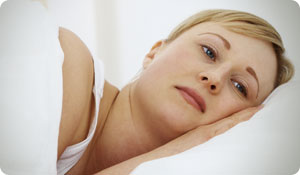
Having trouble falling asleep at night? If you've tried everything from relaxation techniques to sleeping pills, and still can't doze off at a reasonable hour, you may have a condition known as Delayed Sleep Phase Syndrome. Worrying about it won't make it better, but the right type of treatment just might.
Delayed Sleep Phase Syndrome (DSPS) is a sleep disorder that results from a genetic quirk in your biological clock. The circadian rhythm, or normal sleep-wake cycle, doesn't follow the normal night-day pattern in people with DSPS. The primary symptoms include having trouble falling asleep at night and difficulty getting up in the morning, for months at a time. DSPS often occurs in people who are "late owls," such as adolescents who refuse to go to bed early at night but still have to get up for school, people who frequently change their work shifts and young people who regularly go out at night but still have to get up early the next morning to get to their job on time.
You can have DSPS and still get enough sleep, if your schedule permits. In that case, the condition may not be a problem that requires treatment. For most people, however, a schedule of falling asleep at 3 a.m. and waking up at 11 a.m. does not fit into their daily routine. If you have to get up everyday and face the world with just a few hours sleep, behind you, and you feel like you have eternal jet lag, you need help.
The goal of any treatment for DSPS is to shift your sleep schedule back so that you fall asleep at whatever time necessary to insure a full night's sleep. Medical treatments may include the use of melatonin, a hormone that can help regulate our sleep-wake cycle, or behavioral recommendations that involve bright light exposure. Light exposure is an important treatment tool for this type of disorder because exposure to daylight or other bright light, and the timing of that exposure, is what regulates your circadian rhythm.
One method for shifting back your sleep schedule requires at least half an hour or up to a couple of hours of bright light exposure in the early morning, between 6 a.m. and 9 a.m. and staying out of bright light later in the day. In the summer, when the sun comes up early in the day, you can do this by exposing yourself to sunlight early in the day, for instance, with a long morning walk. Special light boxes can be purchases to simulate this effect when the sun doesn't shine so early in the day.
If you think you have DSPS, talk to your doctor or a sleep specialist about light therapy and other effective ways to reset your internal clock.
Sources:
Mindell, JA and Owens, JA. "Delayed Sleep Phase Syndrome." A Clinical Guide to Pediatric Sleep: Diagnosis and Management of Sleep Problems. 2003. Web. 11 Feb 2011
http://www.peds.ufl.edu/divisions/pulmonary/ppc/educ_resources/sleep/delayed_sleep_phase.pdf
Mundey, K. et al. "Phase-Dependent Treatment of Delayed Sleep Phase Syndrome with Melatonin." Sleep. 2005 Oct1;28(10):1271-8. Web. 11 Feb 2011.
http://www.ncbi.nlm.nih.gov/pubmed/16295212





